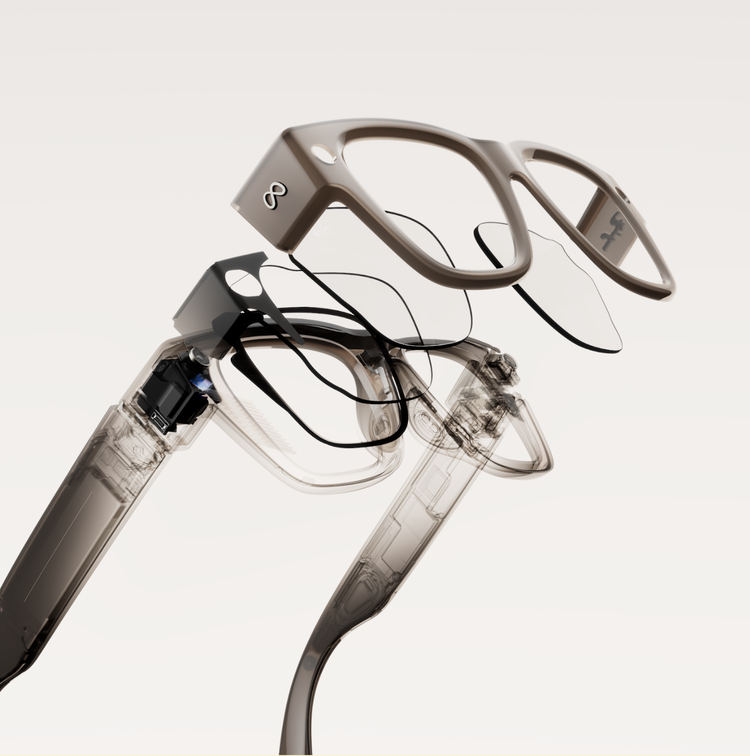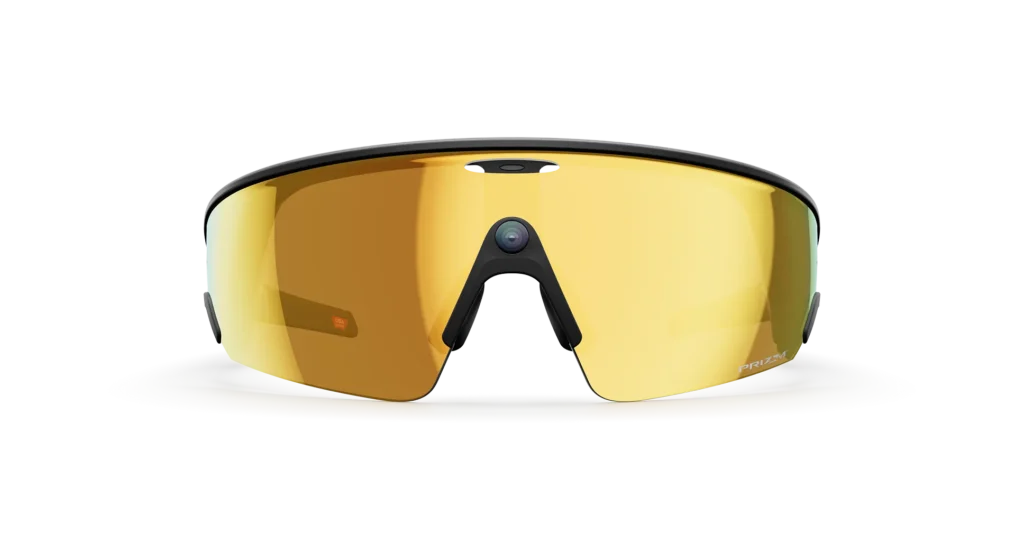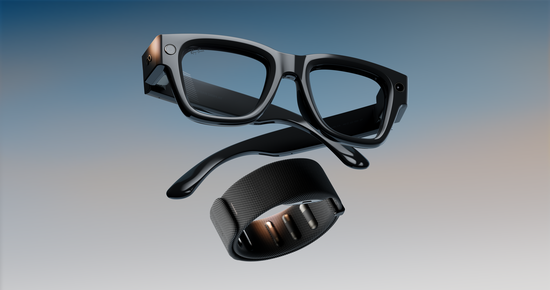Meta has unveiled its most ambitious wearable yet — a Meta Ray-Ban display glasses with a built-in display. Alongside them came a new Oakley sports model and a creator tool called Hyperscape. These launches signal that the company is doubling down on its vision of wearable AI, even as questions remain about price, comfort, and global accessibility.
The Meta Ray-Ban Display Glasses

The headline product is the Meta Ray-Ban Display, priced at $799 and launching in the U.S. on September 30, 2025. According to Reuters (2025), this is Meta’s first consumer smart glasses to include a monocular display embedded in the right lens.
- Display functions: Notifications, navigation prompts, and live captions.
- Gesture control: A “Neural Band” wrist accessory reads tiny electrical impulses in the arm, allowing discreet swipes and pinches.
- Camera & audio: A 12 MP camera with multiple microphones and off-ear speakers.
- Battery: Around six hours of mixed use, extendable to ~30 hours with a charging case.
Meta CEO Mark Zuckerberg pitched the glasses as the “ideal form factor for personal AI,” arguing that they let users stay present in the physical world while layering on digital assistance.
Meta Ray-Ban Display: AI Glasses With an EMG Wristband
Oakley Meta Vanguard: Built for Sport

For more active users, Meta partnered with Oakley to launch the Meta Vanguard at $499. As Reuters notes, this model drops the display but adds:
- A centred action camera.
- Sweat and water resistance.
- Integration with Garmin and Strava.
- Improved durability for fitness and outdoor use.
This marks Meta’s entry into the sports wearable market, which watches and trackers have traditionally dominated.
Hyperscape: Turning Spaces into VR
Perhaps the most surprising announcement was Hyperscape, a tool that lets creators scan real spaces and convert them into photorealistic VR environments. According to Yahoo Finance (2025), capture takes minutes while rendering takes hours. Users can then share private links to their digital spaces.
For African creators and educators, this could be significant. Imagine digitising a Lagos art gallery or Nairobi classroom for global access — preserving culture and enabling immersive learning.
Why This Matters for Africa
Africa’s technology adoption curve is unique. Smartphones leapfrogged fixed lines; mobile money leapfrogged banks. Smart glasses could eventually leapfrog bulky laptops in specific contexts.
But there are challenges:
- Price barrier: At $799, Ray-Ban Display glasses are beyond the reach of most African consumers.
- Network infrastructure: Features such as live captions or real-time translation depend on stable 4G/5G connectivity.
- Social acceptance: Privacy concerns may slow uptake in public spaces.
Yet the possibilities are striking. Field engineers in Lagos could view schematics hands-free. Farmers in Kenya could access AI weather overlays. Students in Accra could instantly translate lectures.
Risks and Limitations
Not everything went smoothly at the launch. During the live demo, the video call failed on stage, raising questions about reliability.
Users also raised the following concerns during the demo:
- Short battery life under heavy use.
- Weight and comfort concerns.
- Limited display capabilities compared to true augmented reality headsets.
- Social pushback over always-on cameras.
The Road Ahead
Meta’s smart glasses are not yet the whole AR future — they’re notification-heavy HUDs with some AI smarts. But they represent a critical step in making AI wearable and practical.
For Africa, the key question is accessibility. Will these glasses remain a premium gadget for the wealthy, or will cheaper models and localised applications bring them within reach of wider populations?
If Meta succeeds, smart glasses could become as ubiquitous as smartphones — and Africa, with its history of leapfrogging, may again redefine how the technology is used.
Key Takeaways
- Meta launched Ray-Ban Display ($799) and Oakley Vanguard ($499) smart glasses.
- The Display model introduces a built-in monocular screen, gesture controls, and six-hour battery life.
- Hyperscape enables creators to convert physical spaces into immersive VR environments.
- Price, comfort, and privacy remain barriers, especially for African markets.
- Despite limitations, these launches point toward an era of everyday AI in your eyewear.

